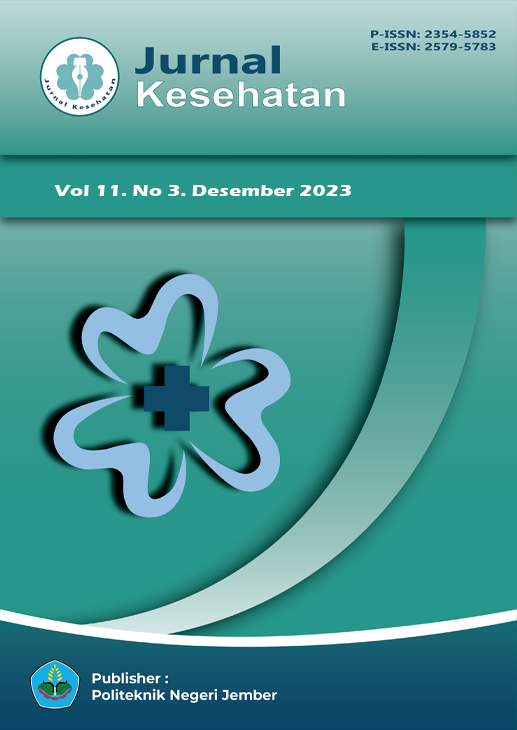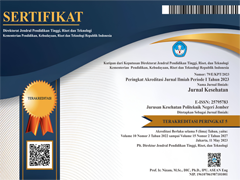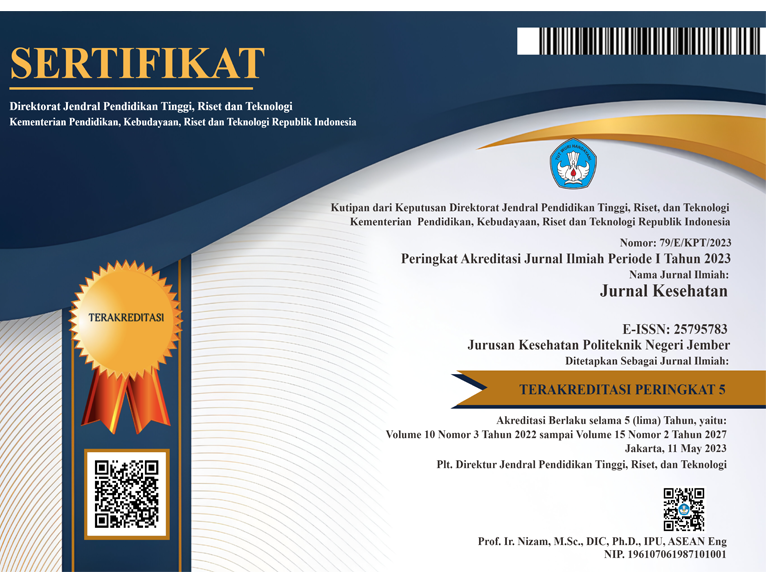Pola Asuh dan Tipe Keluarga dengan Perilaku Seks Bebas Pada Remaja
DOI:
10.25047/j-kes.v11i3.501Downloads
Abstract
Adolescence is an age in search of identity. One of the most common problems is a decline in moral values because they have not discovered their true identity. The aim of the research is to determine the relationship between parenting style and family type and free sexual behavior in teenagers. The research method is quantitative observational with a cross sectional approach. The population in the research was class XI students of SMK dr. Soebandi numbered 114 respondents with samples taken using simple random sampling. The instrument in the research used a questionnaire on parenting patterns, family type and free sexual behavior with the independent variables parenting style and family type and the dependent variable being free sexual behavior. The research data shows that the distribution of parenting patterns is mostly authoritarian (91.3%), family type is nuclear family (75.4%), and risky sexual behavior (89%). The results of statistical analysis using the Spearman test obtained a p significance value of 0.002, which means there is a relationship between parenting style and free sexual behavior, whereas in both results of statistical analysis the p significance value was 0.745, which means there is no relationship between family type and free sexual behavior in teenagers. . Parenting style and family type are one of the factors that shape adolescent behavior, including sexual behavior. Parental parenting styles shape and support good and bad behavior in teenagers.
Keywords: parenting, family type, casual sex behavior, teen
License
Copyright (c) 2024 Dadya Hadi Nindita Putri, kustin

This work is licensed under a Creative Commons Attribution-ShareAlike 4.0 International License.
Authors who publish in this journal agree to the following terms:
1. Copyright belongs to the medical journal as a publication
2. The author retains copyright and grants the journal rights to the first publication carried out simultaneously under a Creative Commons Attribution License which allows others to share the work with an acknowledgment of the author's work and initial publication in this journal.
3. Authors may enter into separate additional contractual arrangements for the non-exclusive distribution of the work (eg sending it to an institutional repository or publishing it in a book) with acknowledgment of initial publication in this journal.
4. Authors are permitted and encouraged to post work online (eg in institutional repositories or on their websites) before and during the submission process, as before and larger citations of published work (see Effects of Open Access).
Selengkapnya tentang teks sumber ini














